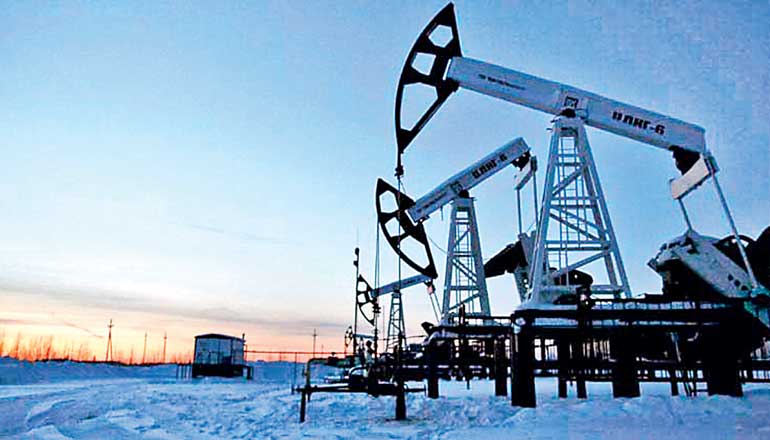Wednesday Feb 12, 2025
Wednesday Feb 12, 2025
Monday, 4 July 2016 00:00 - - {{hitsCtrl.values.hits}}

Singapore (Reuters): Oil prices rose on Friday as investors positioned themselves for more price increases this year in expectation of a tighter physical market although renewed signs of an Asian economic slowdown weighed on the gains.
After rising back above $ 50 per barrel during Asian trading hours, Brent crude oil futures were at $ 49.96 at 0649 GMT, up 25 cents from their last settlement. US West Texas Intermediate (WTI) crude was up 17 cents at $ 48.51 a barrel.
Traders said the higher prices were a result of a tightening physical market, in which the large oversupply that led to the 2014-2016 price slump was now being brought back into balance.
“We believe that the fundamentals of the oil market remain favourable for continued price recovery, and that global inventories will begin to draw in 3Q,” investment bank Jefferies said on Friday.
Despite oil output from the Organization of the Petroleum Exporting Countries (OPEC) rising to a record 32.82 million barrels per day (bpd) in June, OPEC expects demand for its supplies to be higher still.
This was also visible in physical oil pricing, where Dubai crude, as quoted by price-reporting agency Platts, averaged $ 46.256 a barrel for June, the highest since August 2015, traders said on Friday.
Outside the Middle East, US oil production declined by 220,000 barrels per day (bpd) to 8.93 million bpd in April, the largest monthly decline since September 2008, according to Barclays bank, citing US government data. A further easing of monetary policy expected on the back of Asia’s slowing economies and because of Britain’s vote to leave the European Union was also seen as a reason for financial traders to put money into commodities, which saw one of the strongest quarterly performances in years in the second quarter of 2016.
“The spectre of further easing in monetary policies around the world continues to support commodity markets. With quarter-end selling also behind us, investors positioning should start to turn more bullish,” ANZ Bank said.
Despite the overall bullish outlook for oil prices, Asian economic headwinds remain a concern.
Growth in China’s manufacturing sector stalled in June, an official survey showed on Friday, suggesting a spring bounce in activity is fizzling.
The official Purchasing Managers’ Index (PMI) eased to 50.0 in June from 50.1 in May and right at the 50-point mark that separates growth from contraction on a monthly basis.
In South Korea, exports fell for an 18th straight month in June, with shipments from the world’s sixth-largest exporter down 2.7% from a year ago to $ 45.3 billion.
Discover Kapruka, the leading online shopping platform in Sri Lanka, where you can conveniently send Gifts and Flowers to your loved ones for any event including Valentine ’s Day. Explore a wide range of popular Shopping Categories on Kapruka, including Toys, Groceries, Electronics, Birthday Cakes, Fruits, Chocolates, Flower Bouquets, Clothing, Watches, Lingerie, Gift Sets and Jewellery. Also if you’re interested in selling with Kapruka, Partner Central by Kapruka is the best solution to start with. Moreover, through Kapruka Global Shop, you can also enjoy the convenience of purchasing products from renowned platforms like Amazon and eBay and have them delivered to Sri Lanka.
Discover Kapruka, the leading online shopping platform in Sri Lanka, where you can conveniently send Gifts and Flowers to your loved ones for any event including Valentine ’s Day. Explore a wide range of popular Shopping Categories on Kapruka, including Toys, Groceries, Electronics, Birthday Cakes, Fruits, Chocolates, Flower Bouquets, Clothing, Watches, Lingerie, Gift Sets and Jewellery. Also if you’re interested in selling with Kapruka, Partner Central by Kapruka is the best solution to start with. Moreover, through Kapruka Global Shop, you can also enjoy the convenience of purchasing products from renowned platforms like Amazon and eBay and have them delivered to Sri Lanka.